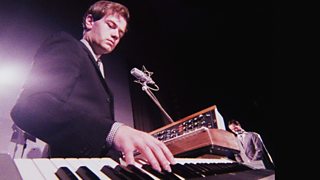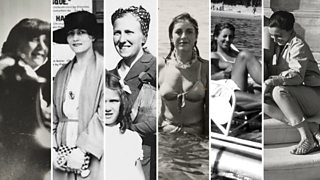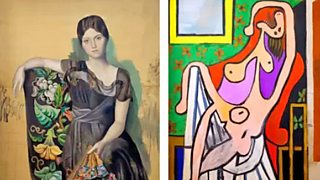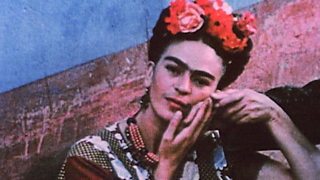Cultural powerplant: How Düsseldorf shaped contemporary art and electronic music
29 November 2017
For such a small city, Düsseldorf is a melting pot for art, fashion and design, and the scene that sprung up around the corner from its own art school pollinated an electronic music revolution. WILLIAM COOK considers the cultural history of this mini-metropolis on the Rhine.
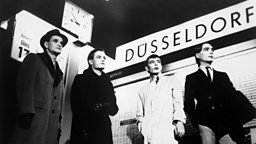
Here in Düsseldorf, beside the mighty River Rhine, Germany’s ugliest and most important gallery is celebrating its 50th birthday. The Kunsthalle is a crude concrete block, built on the ruins of a beautiful old gallery that was destroyed by the RAF during the war.
How did Düsseldorf become a mecca of modern art and music?
Locals regard it as an eyesore, and you can see their point of view. But once you step inside, you’re bewitched by its rich history. For 50 years, it’s been the forum for Europe’s most innovative artists – not only painters and sculptors, but musicians too.
The list of artists who’ve exhibited at the Kunsthalle reads like a Who’s Who of modern art, from German artists like Joseph Beuys and Gerhard Richter to British sculptors like Richard Long and Tony Cragg. German artist Sigmar Polke caused a sensation here with his show, Kunst Macht Frei. For half a century, the Kunsthalle has been at the cutting edge - for music, not just art. Europe’s most influential band, Kraftwerk, played here as well.
Since the foundation of the Kunsthalle, Düsseldorf has shaped the direction of contemporary art throughout Europe and beyond: spearheading conceptual art; championing photography; leading the revival of figurative painting - and virtually inventing electronic pop music. Yet its population is barely half a million, far less than its local rival, Cologne. So how did Düsseldorf become a mecca of modern art - and music? And what is its influence today?
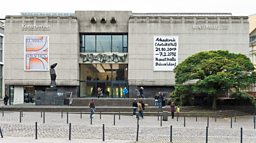
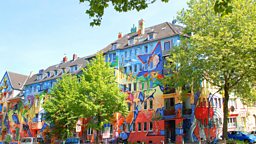

Düsseldorf's artistic prowess stems from the Kunstakademie, its prestigious art school, a cultural landmark since the 19th Century. August Macke was a student here before the First World War. Paul Klee was a professor between the wars (until he was dismissed by the Nazis). However it was Joseph Beuys who put the Kunstakademie on the international map. As a teacher here during the 1960s, he scandalised the art world, declaring that ‘everyone is an artist’ and throwing his classes open to all comers.
Beuys was fired in 1972 and returned in triumph in 1980, and countless pioneering artists have followed him through the Kunstakademie. Gerhard Richter, a student and then a professor here, is now one of the world’s most successful painters. Sigmar Polke, another student here, reinvented figurative painting. Anselm Kiefer carried on where he left off.
Bernd and Hilla Becher (a professor and a student, who subsequently became a couple) brought photography back into the gallery with their austere shots of industrial architecture.
Photography students like Axel Hütte, Thomas Ruff and Thomas Struth all followed in their footsteps. Their legacy endures – Hütte currently has a one man show at Düsseldorf’s Kunstpalast. Leading German photographer Andres Gursky still teaches here.
But Düsseldorf is more than just a list of famous names – it’s still a hotbed of creativity. There are some fine museums (K20, devoted to 20th Century Art, and K21, devoted to 21st Century Art) but what’s even more impressive is the way artists and collectors have colonised the most unlikely spaces. Philara is a private gallery located in an old factory. Kunst im Tunnel (KIT) is a public gallery in a road tunnel that runs beneath the Rhine.
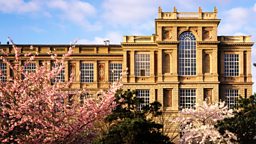


So what makes Düsseldorf so vibrant? It can’t just be the Kunstakademie. Size and location has a lot to do with it. The city centre is compact (and designed for pedestrians, not motorists) but it’s also at the centre of a huge urban sprawl that stretches across the Ruhr, the Rhineland and the Benelux, bringing in artists – and audiences - from miles around.
Düsseldorf 's anonymous postwar architecture was the perfect backdrop for the computer melodies of Kraftwerk
Like a lot of German cities, Düsseldorf was heavily bombed during the Second World War and rebuilt in a dreadful hurry. No-one in their right mind would call it beautiful, but that’s all part of its aesthetic flair. Its anonymous postwar architecture was the perfect backdrop for Kraftwerk's journey from experimental rock to futuristic computer melodies and the motorik beat-driven meditations of Neu!, and influential electronic bands like Deutsche Amerikanische Freundschaft (DAF) and Die Krupps.
Walking around the Altstadt (Old Town), a maze of boozy bars, you can see why there’s always been so much interaction between artists and musicians here. Clubs like Creamcheese and the Ratinger Hof, where these ‘krautrock’ bands started out, are around the corner from the Kunstakademie.
Minimalist artist Ime Knoebel was a student at the Kunstakademie. He met his wife Carmen in the Ratinger Hof, where she was the manager. Former Kraftwerk member Wolfgang Flür calls Dusseldorf the cradle of electronic music. It’s also the Continental cradle of contemporary art.
Rudi Esch, bassist with Die Krupps and the author of Electri_City, a book about electronic music in Düsseldorf, took me for a walk around the Altstadt. It’s fascinating to see the old sites, but Creamcheese is no more – the building is now a smart apartment block – and the Ratinger Hof looks rather corporate. Has Düsseldorf’s art scene become a victim of its own success?
This year, for the first time, the city hosted Art Düsseldorf. The fair's opening was a glitzy event, sponsored by Lexus – an enormous hangar swarming with wealthy collectors in expensive clothes. Düsseldorf has long been the centre of the German fashion industry (hence the Kraftwerk song, The Model) but it’s always had its grungy side. Without a bit of grit, can art survive?
But despite the gentrification of the city centre, Düsseldorf hasn’t lost its artistic energy. In unexpected places, down back alleys, artists are still hard at work.
The last place I visited, and the highlight of my trip, was postPOST, an old postal depot, earmarked for demolition, which has become an ad-hoc exhibition space. It’s anarchic and experimental, full of strange, exciting sculpture, and it encapsulates what’s so special about this mini metropolis on the Rhine. Catch it while you can – before the developers move in.


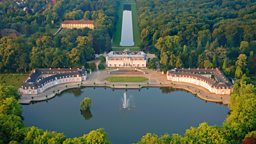
Now watch this
- Producers Hank Shocklee and Steve Albini laud Kraftwerk's Autobahn
- Kraftwerk performing Autobahn on Tomorrow's World in 1975
- A ukulele cover of Kraftwerk's The Model

Related Links
More from BBC Arts
-
![]()
Picasso’s ex-factor
Who are the six women who shaped his life and work?
-
![]()
Quiz: Picasso or pixel?
Can you separate the AI fakes from genuine paintings by Pablo Picasso?
-
![]()
Frida: Fiery, fierce and passionate
The extraordinary life of Mexican artist Frida Kahlo, in her own words
-
![]()
Proms 2023: The best bits
From Yuja Wang to Northern Soul, handpicked stand-out moments from this year's Proms

